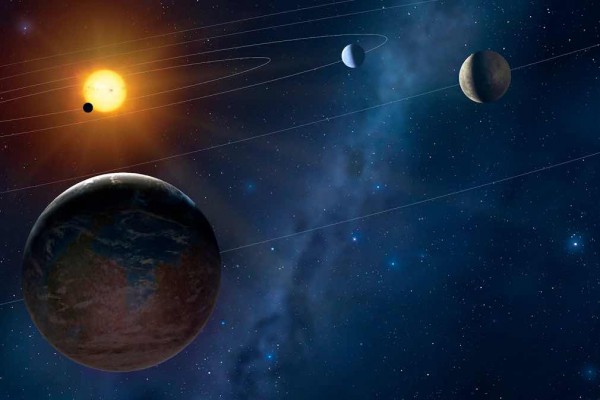Scientists have discovered that the comet, Churyumov-Gerasimenko 67P, is sprinkled with the ingredients for life. Organic compounds were discovered by the lander, Philae, after it made touchdown on the comet last November.(1)
Philae didn’t make a smooth landing, however. The probe accidentally veered off course two hours before landing. Once the probe descended onto the comet, it bounced off and ended up residing in a shaded area that its solar panels were not designed to withstand.(1)
The lander went into hibernation for several months after it made landing. One of the instruments attached to the probe did not respond to a wake up command on July 5, even though it was in an optimal spot to transmit data. As the comet approached the sun, Philae was able to make contact with a space agency on July 13. The spacecraft fell silent once again on June 24.(2)
Unexpected organic compounds discovered
The probe contains seven instruments used to collect data. An instrument named COSAC ignited excitement among researchers when it found 16 organic compounds, four of which were not known to exist on the comet.(3)
The compounds that were discovered were divided into six classes of organic molecules including alcohols, carbonyls, amines, nitriles, amides and isocyanates. The four compounds detected on the comet for the first time included methyl isocyanate, acetone, propionaldehyde and acetamide. These compounds are sufficient to produce water and simple sugars.(1)
All the compounds are interrelated; they were either spawned or a precursor of a different compound. The data collected sheds light on the evolution of compounds on the comet, and the environment of the early solar system. Scientists have described the compounds on the comet as “a frozen primordial soup.”(3)
According to one scientist, these findings “imply that the solar system chemistry fosters the formation of prebiotic material in noticeable concentrations.”(3)
Comets may have seeded life on Earth
Scientists are in the dark about the origin of life. They do not know whether life is rare or common place in the universe. Numerous studies about the mission have been published in the journal Science. The probe’s findings give credence to the theory that life may have been sown onto Earth by comets.
No one understands how non-living matter can give rise to living matter. Nevertheless, if the compounds on the comet’s surface were warmed, placed in the right environment, and put together correctly, they could, in theory, spawn life.
Scientists are unsure whether the organic compounds originated on the comet or were seeded their during the formation of the solar system. The compounds could have first formed in space and then drifted onto the comet.(3)
Philae’s findings shouldn’t be exaggerated, however. What would have been really exciting is if Philae discovered that the comet harbored amino acids, which are the buildings blocks of proteins.(4)
The fate of the spacecraft remains uncertain. Some believe that Philae may have been keeled over by gas spewing from the comet’s surface. As the comet approaches the sun, gas jets are likely to become more intense. It’s closest approach to the sun will be on August 13th.(3)
Some suggest that the probe may be teetering on the edge of a cliff and has been damaged by falling debris. Others are keeping their fingers crossed, hoping Philae is still intact.
The instruments used by Philae has given the scientists plenty of data to keep busy. The origin of life remains one of the most perplexing mysteries to plague science. Nevertheless, the results of the probe suggest that the ingredients necessary for life may not be unique to our neck of the woods.
Sources include:
(1) Sci-News.com
(2) Space.com
(3) BBC.com
(4) io9.com
















